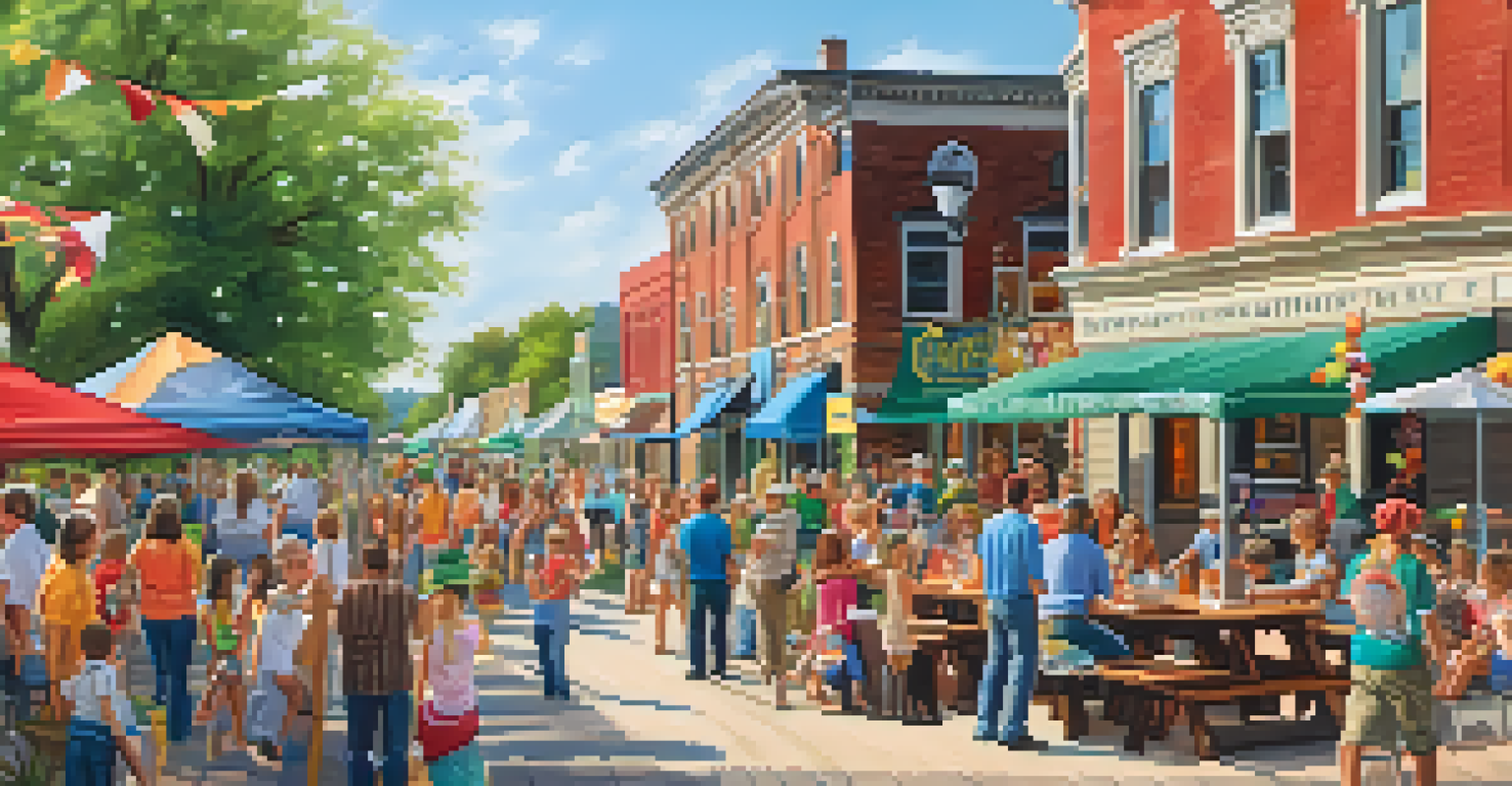Creating Engaging Heritage Trails for Cultural Exploration

Understanding the Importance of Heritage Trails
Heritage trails serve as a bridge to our past, offering insights into the culture and history of a place. By walking these paths, people can connect with the stories that shaped their community, fostering a deeper appreciation for local traditions. This connection not only enriches the visitor experience but also promotes cultural preservation and community identity.
Heritage is what makes us who we are; it is the story of our past, and it is the foundation of our future.
Consider the impact of a well-designed heritage trail. Visitors gain more than just knowledge; they enjoy a sensory experience through sights, sounds, and even smells that evoke history. It's like stepping into a time machine where each stop along the trail tells a story, making the experience both educational and memorable.
Moreover, heritage trails can stimulate local economies by attracting tourists who support small businesses. When communities invest in creating engaging trails, they not only celebrate their heritage but also encourage sustainable tourism that benefits everyone.
Identifying Key Historical and Cultural Sites
The first step in creating an engaging heritage trail is identifying significant historical and cultural sites. This could include landmarks, museums, or places of historical significance that resonate with the local community's identity. By conducting thorough research and engaging with local historians, you can uncover stories that may be overlooked.

Involving community members in this process is crucial. They can share personal anecdotes and insights that enrich the trail's narrative, making it more relatable and authentic. Think of it as piecing together a puzzle where each person's contribution adds depth and color to the final picture.
Heritage Trails Connect Communities
Heritage trails foster a deeper appreciation for local traditions and promote cultural preservation.
Additionally, consider the diverse perspectives that can be represented along the trail. Highlighting various narratives ensures that the heritage trail reflects a comprehensive view of the community's history, fostering inclusivity and understanding among visitors.
Designing an Engaging Trail Experience
Once the sites are identified, the next step is designing an engaging experience for visitors. This involves mapping out the trail, ensuring it flows logically and provides a pleasant walking experience. The trail should be well-marked and accessible, allowing people of all ages and abilities to enjoy it.
Stories are the root of culture; they connect us to each other and to the places we call home.
To enhance engagement, consider incorporating interactive elements along the trail. This could be through QR codes that link to audio stories, augmented reality features, or guided tours that provide deeper insights into the sites. Imagine walking along and being able to hear the voices of those who shaped the history you’re experiencing firsthand.
Creating seating areas, picnic spots, or viewpoints can also enhance the trail experience. These moments of pause allow visitors to reflect on what they’ve learned and enjoy the surroundings, making the journey not just about the destination but about the entire exploration.
Incorporating Storytelling Techniques
Storytelling is at the heart of an engaging heritage trail. Each site should tell a story that resonates with visitors, whether it's about the people who lived there, significant events, or cultural practices. By weaving these narratives into the trail, you create a connection that transcends time and place.
Utilizing various storytelling techniques can enhance the experience. For example, you could create themed narratives that follow a character or event throughout the trail, allowing visitors to immerse themselves in a storyline. Think of it like a novel where each chapter unfolds at a different stop, keeping the reader eager to find out what happens next.
Community Involvement is Key
Engaging local residents in the planning process creates a sense of ownership and pride in the heritage trail.
Visual aids, such as photographs or illustrations, can also complement storytelling. By providing a visual context, you help visitors visualize the past, making the history more tangible and relatable.
Engaging the Community for Support
To ensure the success of a heritage trail, community engagement is essential. Involving local residents in the planning and development process fosters a sense of ownership and pride. When community members feel invested in the project, they are more likely to support it and promote it to others.
Organizing workshops or community meetings can be a great way to gather input and ideas. This collaborative approach not only strengthens community bonds but also leads to a trail that truly reflects the values and history of the area. Think of it as a potluck, where everyone brings a dish that contributes to a rich and diverse meal.
Additionally, local businesses can play a pivotal role in supporting the trail. Collaborating with them for sponsorships or promotional efforts can enhance the experience for visitors and create a thriving environment that benefits the entire community.
Marketing and Promoting the Heritage Trail
After developing the trail, effective marketing is key to attracting visitors. Utilize social media platforms, local tourism websites, and community events to spread the word. Creating visually appealing promotional materials, such as brochures or videos, can help showcase the trail’s unique offerings.
Engaging storytelling should also be part of your marketing strategy. Share personal stories from community members about their connection to the trail. These narratives can resonate with potential visitors, drawing them in like a good book they can’t wait to read.
Effective Marketing Attracts Visitors
Utilizing storytelling and partnerships in marketing helps showcase the unique offerings of the heritage trail.
Moreover, consider partnerships with local tourism boards or travel bloggers. Their reach can extend your marketing efforts, bringing more visibility to the trail and encouraging people to explore the cultural richness it has to offer.
Evaluating and Improving the Trail Experience
Finally, it’s important to evaluate the trail's effectiveness regularly. Gathering visitor feedback through surveys or informal conversations can provide valuable insights into what works and what could be improved. This ongoing evaluation is like a tuning process, ensuring the trail continues to resonate with visitors over time.
Look for patterns in the feedback to identify areas for enhancement. For instance, if visitors express a desire for more interactive elements, consider adding new features that cater to this interest. By being responsive to visitor needs, you create a dynamic and evolving trail experience.

Continuous improvement not only keeps the trail fresh and engaging but also fosters a sense of community. By demonstrating that you value feedback, you encourage ongoing participation and enthusiasm for the heritage trail, ensuring its legacy for future generations.